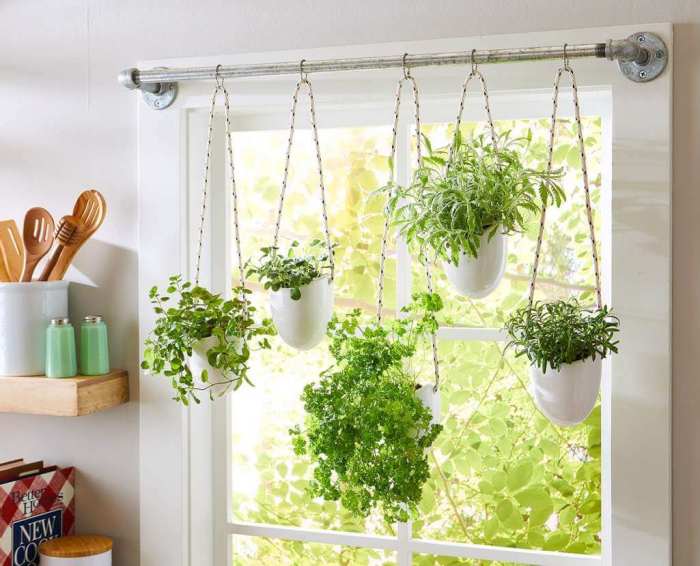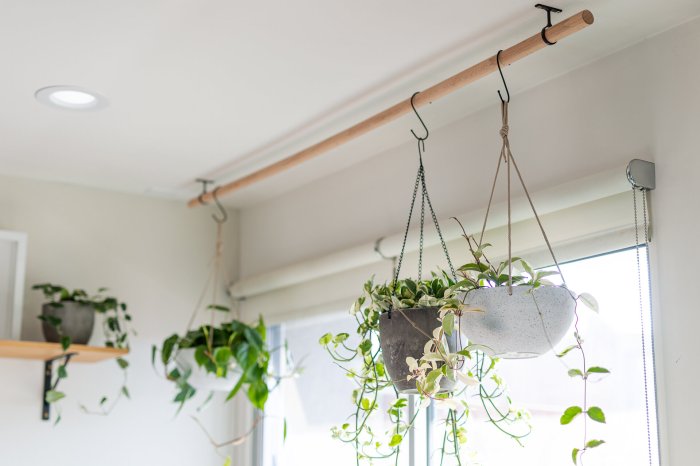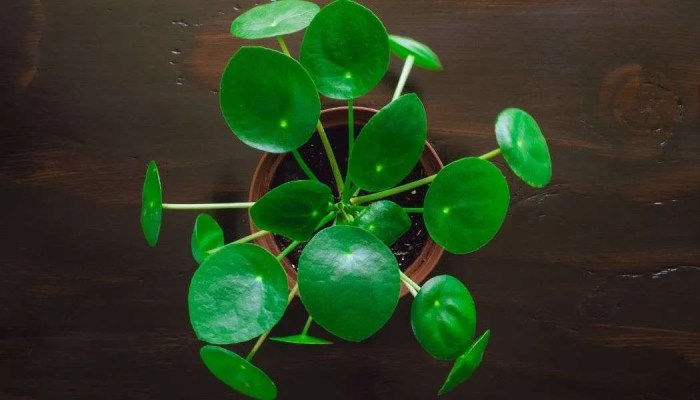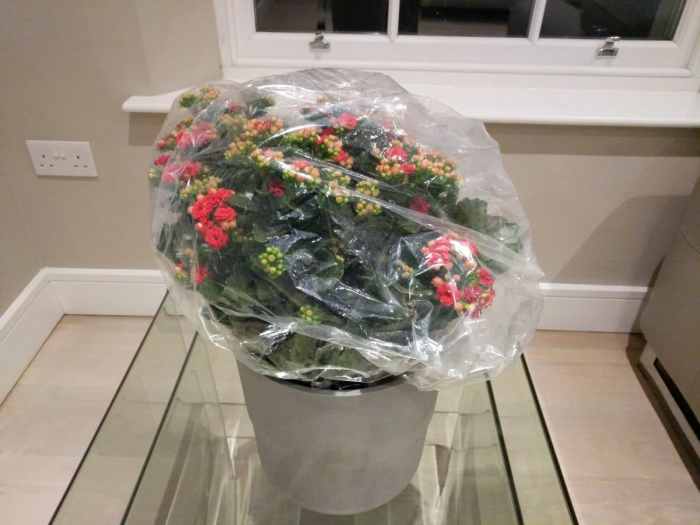Hanging plants that like humidity – Embark on a horticultural journey into the realm of hanging plants that revel in humidity. These verdant beauties not only enhance your living space but also bring a touch of the tropics indoors. From lush ferns to delicate orchids, discover the secrets of creating a thriving environment for these humidity-loving plants.
As we delve into the topic, we’ll explore the benefits of humidity for hanging plants, unravel the art of creating a humid haven, and address common challenges and solutions. Whether you’re a seasoned plant enthusiast or just starting your green thumb adventure, this guide will empower you to nurture a thriving oasis of hanging plants that flourish in the embrace of humidity.
Hanging Plant Varieties for Humid Environments
Hanging plants thrive in humid environments, adding lush greenery and a touch of nature to any space. These plants can purify the air, boost humidity levels, and create a calming ambiance.
When selecting hanging plants for humid environments, consider species that naturally occur in tropical or subtropical regions, such as:
Ferns
- Boston Fern ( Nephrolepis exaltata): With its long, arching fronds, the Boston Fern is a classic choice for humid environments.
- Maidenhair Fern ( Adiantum capillus-veneris): Delicate and graceful, the Maidenhair Fern adds a touch of elegance to any space.
- Staghorn Fern ( Platycerium bifurcatum): An unusual and eye-catching fern that attaches itself to tree trunks or other surfaces.
Benefits of Humidity for Hanging Plants
Humidity plays a crucial role in the health and well-being of hanging plants, providing several benefits that contribute to their overall growth and appearance.
Hanging plants that thrive in humid environments can add a touch of greenery and freshness to any space. If you’re considering adding a hanging plant to your home, it’s important to know that many of these plants can be placed in a pot instead of a hanging basket.
For more information on the suitability of hanging plants for pots, you can refer to this helpful article: Can You Put Hanging Plants in a Pot? Returning to the topic of hanging plants that enjoy humidity, some popular choices include ferns, air plants, and peace lilies, which can create a lush and inviting atmosphere in any room.
One of the primary benefits of humidity for hanging plants is its ability to reduce water loss through transpiration. Transpiration is the process by which plants release water vapor into the air through their leaves. In dry environments, transpiration rates can be high, leading to water stress and dehydration in plants.
However, increased humidity levels slow down the rate of transpiration, allowing plants to retain more water and maintain their turgidity.
Improved Nutrient Absorption
Humidity also enhances nutrient absorption in hanging plants. Water is the primary medium through which nutrients are transported from the soil to the plant’s tissues. In humid environments, the increased availability of water facilitates the movement of nutrients, ensuring that plants receive the necessary nourishment for optimal growth.
Creating a Humid Environment for Hanging Plants

Maintaining humidity levels is crucial for the thriving of hanging plants that prefer humid environments. Several techniques can be employed to create a humid microclimate around these plants, ensuring their optimal growth and well-being.
One effective method is to group humidity-loving plants together. This creates a localized humid environment as the plants release moisture through transpiration, increasing the humidity levels in the surrounding air.
Among hanging plants, there are several varieties that thrive in humid environments. These plants often feature lush foliage and can create a tropical atmosphere in your home. If you have a west-facing window, which receives bright, indirect light for most of the day, you may want to consider hanging plants for west-facing window . These plants can tolerate the intense light and will continue to thrive in the humid environment created by the hanging pots.
Misting
Regular misting of the plants using a spray bottle filled with lukewarm water can provide a quick and effective boost to humidity levels. However, it’s important to avoid over-misting, as it can lead to waterlogging in the soil and potential root rot.
Pebble Tray
A simple yet effective technique involves placing a tray filled with pebbles or gravel beneath the hanging plant. The tray is then filled with water, which evaporates and raises the humidity around the plant. Ensure the pot’s base does not directly touch the water to prevent root rot.
Humidifier
For larger areas or when other methods are insufficient, using a humidifier can significantly increase humidity levels. By releasing water vapor into the air, humidifiers create a consistent and controlled humid environment, ideal for humidity-loving hanging plants.
Common Problems and Solutions for Hanging Plants in Humid Environments

Humidity is an important factor for the growth and health of hanging plants. However, too much humidity can also lead to problems. Some of the most common problems include:
- Fungal diseases
- Root rot
- Yellowing leaves
- Stunted growth
There are a number of things you can do to prevent or solve these problems. Here are a few tips:
Fungal diseases
Fungal diseases are caused by fungi that thrive in humid environments. These diseases can cause a variety of symptoms, including brown or black spots on leaves, wilting, and stunted growth. To prevent fungal diseases, make sure your plants have good air circulation and avoid overwatering.
Root rot
Root rot is a condition that occurs when the roots of a plant rot due to excessive moisture. This can be caused by overwatering, poor drainage, or a combination of both. To prevent root rot, make sure your plants have well-draining soil and avoid overwatering.
Yellowing leaves, Hanging plants that like humidity
Yellowing leaves can be a sign of a number of problems, including overwatering, nutrient deficiency, or disease. If you notice your plants’ leaves turning yellow, check the soil moisture and make sure your plants are getting enough nutrients. If the problem persists, you may need to consult with a plant expert.
Stunted growth
Stunted growth can be a sign of a number of problems, including nutrient deficiency, disease, or root rot. If you notice your plants are not growing as well as they should, check the soil moisture, make sure your plants are getting enough nutrients, and inspect the roots for signs of disease or rot.
Aesthetic Considerations for Hanging Plants in Humid Environments: Hanging Plants That Like Humidity

Incorporating hanging plants into humid environments can not only enhance air quality but also create a visually appealing atmosphere. However, it’s crucial to consider certain aesthetic factors to ensure harmony within the space.
One important aspect is the choice of plant varieties. Plants with large, lush foliage, such as ferns or trailing ivy, can create a dramatic and eye-catching effect. Conversely, smaller plants with delicate leaves, like spider plants or succulents, can add a touch of elegance and sophistication.
Size and Scale
The size and scale of the hanging plants should complement the dimensions of the room. In smaller spaces, opt for compact plants that won’t overwhelm the area. For larger rooms, consider larger plants or multiple hanging baskets to create a more substantial presence.
Color and Texture
The color and texture of the plants can contribute to the overall ambiance of the room. Brightly colored plants, such as variegated philodendrons or anthuriums, can add a pop of vibrancy, while plants with softer hues, like ferns or mosses, can create a calming and serene atmosphere.
Consider the textures of the leaves as well; velvety leaves can add a touch of luxury, while spiky or serrated leaves can introduce an element of intrigue.
Humidity-loving hanging plants, known for their lush foliage and air-purifying qualities, offer a touch of nature indoors. However, their longevity can vary. For those seeking durable hanging plants, here’s a guide to help you choose species that will thrive for years to come.
These long-lasting hanging plants not only tolerate humidity but also add a vibrant touch to any indoor space.
Vertical Interest
Hanging plants offer a unique opportunity to add vertical interest to a space. They can draw the eye upward, creating a sense of height and drama. Place hanging plants at varying heights to create a dynamic and visually appealing display.
Harmony and Balance
To achieve a harmonious and balanced aesthetic, consider the overall composition of the space. Distribute the hanging plants evenly throughout the room to avoid creating a cluttered or unbalanced appearance. Group plants with similar colors or textures together to create visual interest, or stagger them for a more eclectic look.
Final Wrap-Up

In conclusion, hanging plants that thrive in humidity offer a captivating way to bring the beauty of nature into your home. By understanding their unique needs and creating a conducive environment, you can cultivate a lush and vibrant indoor garden that will delight your senses and purify the air you breathe.
Embrace the allure of these humidity-loving plants and let them transform your living space into a verdant paradise.
FAQ Summary
What are the benefits of humidity for hanging plants?
Humidity aids in transpiration, the process by which plants release excess water vapor through their leaves. It also helps regulate temperature, preventing plants from overheating.
How can I create a humid environment for hanging plants?
Misting plants regularly, using a humidifier, or placing them on a tray filled with pebbles and water can increase humidity levels.
What are some common problems associated with hanging plants in humid environments?
Excess humidity can lead to fungal diseases and root rot. Proper ventilation and ensuring plants have adequate drainage can help mitigate these issues.